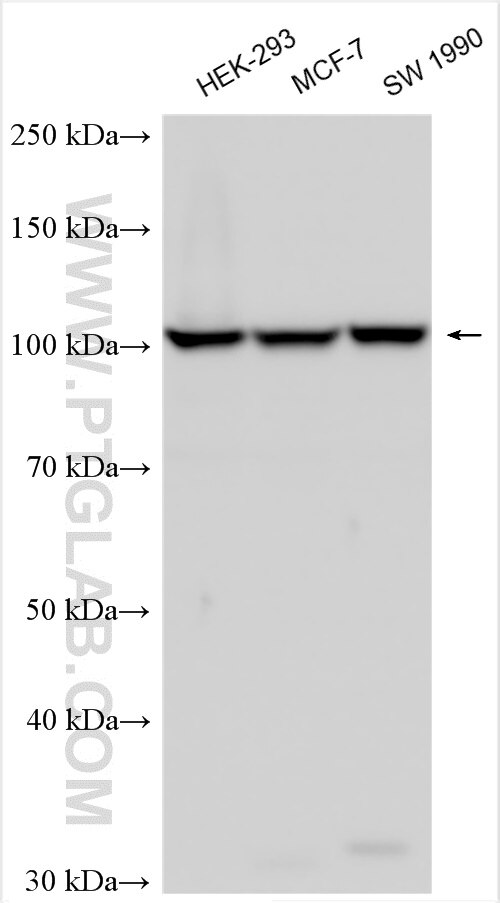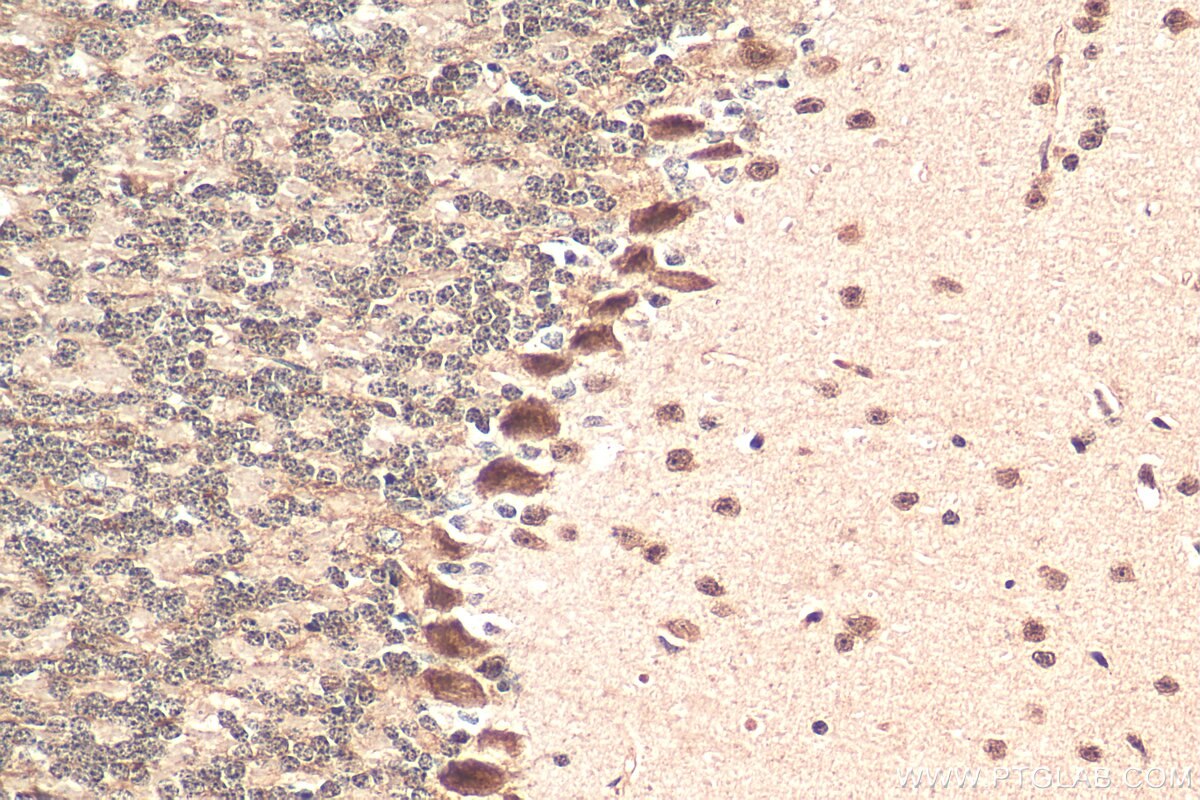NOM1 Polyklonaler Antikörper
NOM1 Polyklonal Antikörper für IHC, WB, ELISA
Wirt / Isotyp
Kaninchen / IgG
Getestete Reaktivität
human, Maus
Anwendung
WB, IHC, ELISA
Konjugation
Unkonjugiert
Kat-Nr. : 29798-1-AP
Synonyme
Galerie der Validierungsdaten
Geprüfte Anwendungen
| Erfolgreiche Detektion in WB | HEK-293-Zellen, MCF-7-Zellen, SW 1990-Zellen |
| Erfolgreiche Detektion in IHC | Maus-Cerebellum-Gewebe Hinweis: Antigendemaskierung mit TE-Puffer pH 9,0 empfohlen. (*) Wahlweise kann die Antigendemaskierung auch mit Citratpuffer pH 6,0 erfolgen. |
Empfohlene Verdünnung
| Anwendung | Verdünnung |
|---|---|
| Western Blot (WB) | WB : 1:1000-1:4000 |
| Immunhistochemie (IHC) | IHC : 1:50-1:500 |
| It is recommended that this reagent should be titrated in each testing system to obtain optimal results. | |
| Sample-dependent, check data in validation data gallery | |
Produktinformation
29798-1-AP bindet in WB, IHC, ELISA NOM1 und zeigt Reaktivität mit human, Maus
| Getestete Reaktivität | human, Maus |
| Wirt / Isotyp | Kaninchen / IgG |
| Klonalität | Polyklonal |
| Typ | Antikörper |
| Immunogen | NOM1 fusion protein Ag31423 |
| Vollständiger Name | nucleolar protein with MIF4G domain 1 |
| Berechnetes Molekulargewicht | 96KD |
| Beobachtetes Molekulargewicht | 96~100 kDa |
| GenBank-Zugangsnummer | NM_138400 |
| Gene symbol | NOM1 |
| Gene ID (NCBI) | 64434 |
| Konjugation | Unkonjugiert |
| Form | Liquid |
| Reinigungsmethode | Antigen-Affinitätsreinigung |
| Lagerungspuffer | PBS mit 0.02% Natriumazid und 50% Glycerin pH 7.3. |
| Lagerungsbedingungen | Bei -20°C lagern. Nach dem Versand ein Jahr lang stabil Aliquotieren ist bei -20oC Lagerung nicht notwendig. 20ul Größen enthalten 0,1% BSA. |
Hintergrundinformationen
Nucleolar protein NOM1, which contains an MIF4G domain and an MA3 domain, was first isolated from the bone marrow of children with acute myeloid leukemia. NOM1 is highly conserved in a variety of species, including in yeast and in humans.
Protokolle
| Produktspezifische Protokolle | |
|---|---|
| WB protocol for NOM1 antibody 29798-1-AP | Protokoll herunterladen |
| IHC protocol for NOM1 antibody 29798-1-AP | Protokoll herunterladen |
| Standard-Protokolle | |
|---|---|
| Klicken Sie hier, um unsere Standardprotokolle anzuzeigen |




